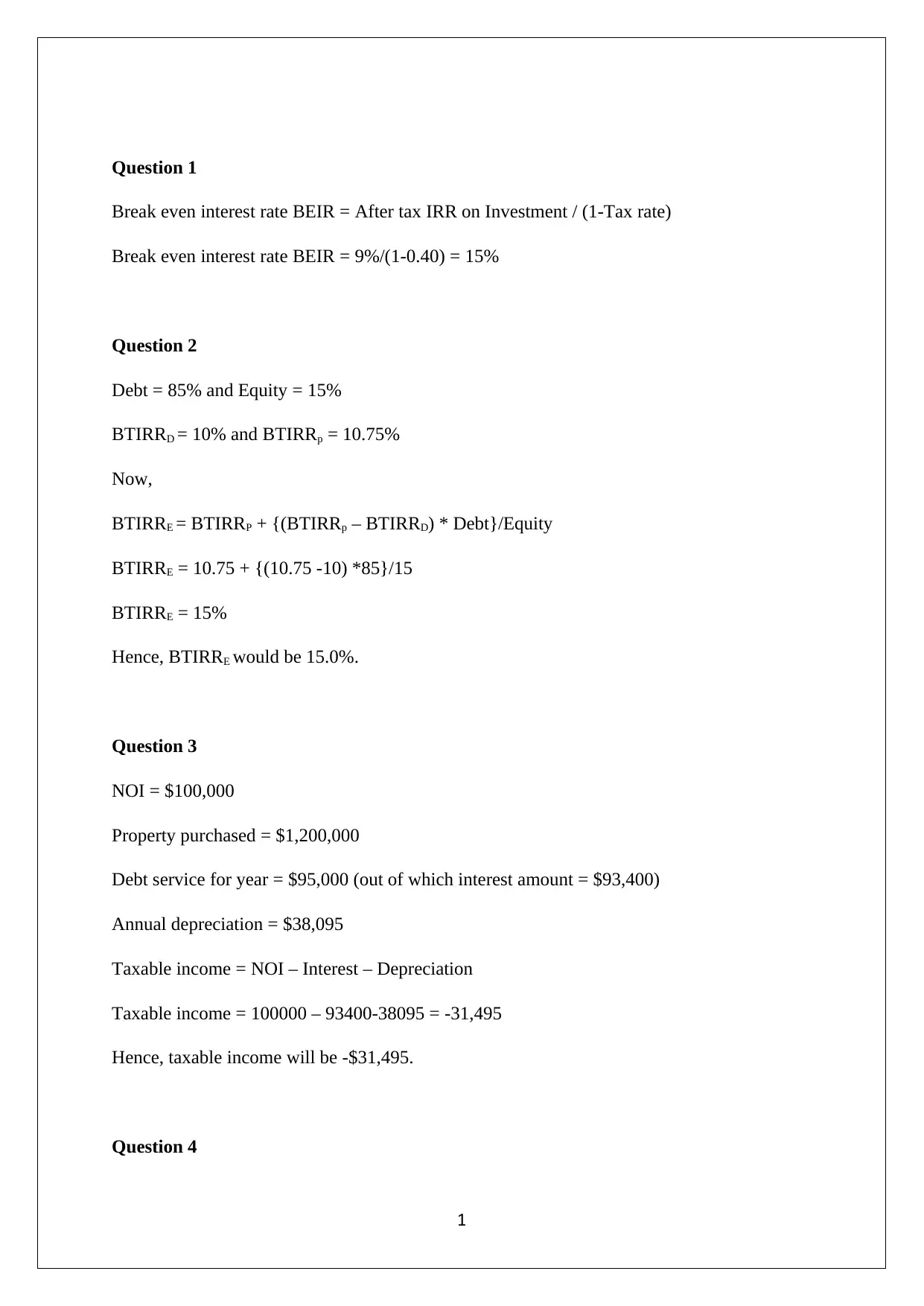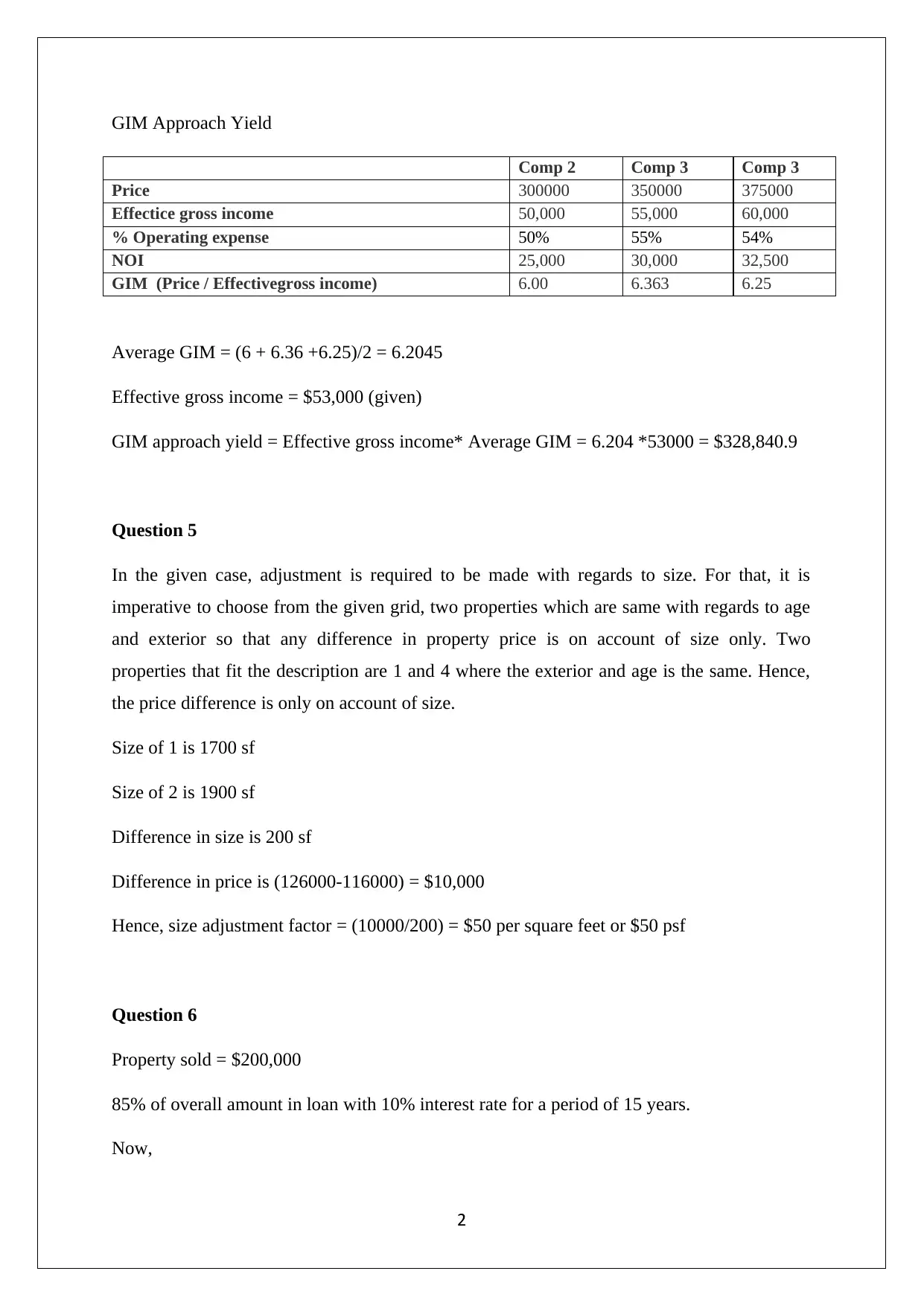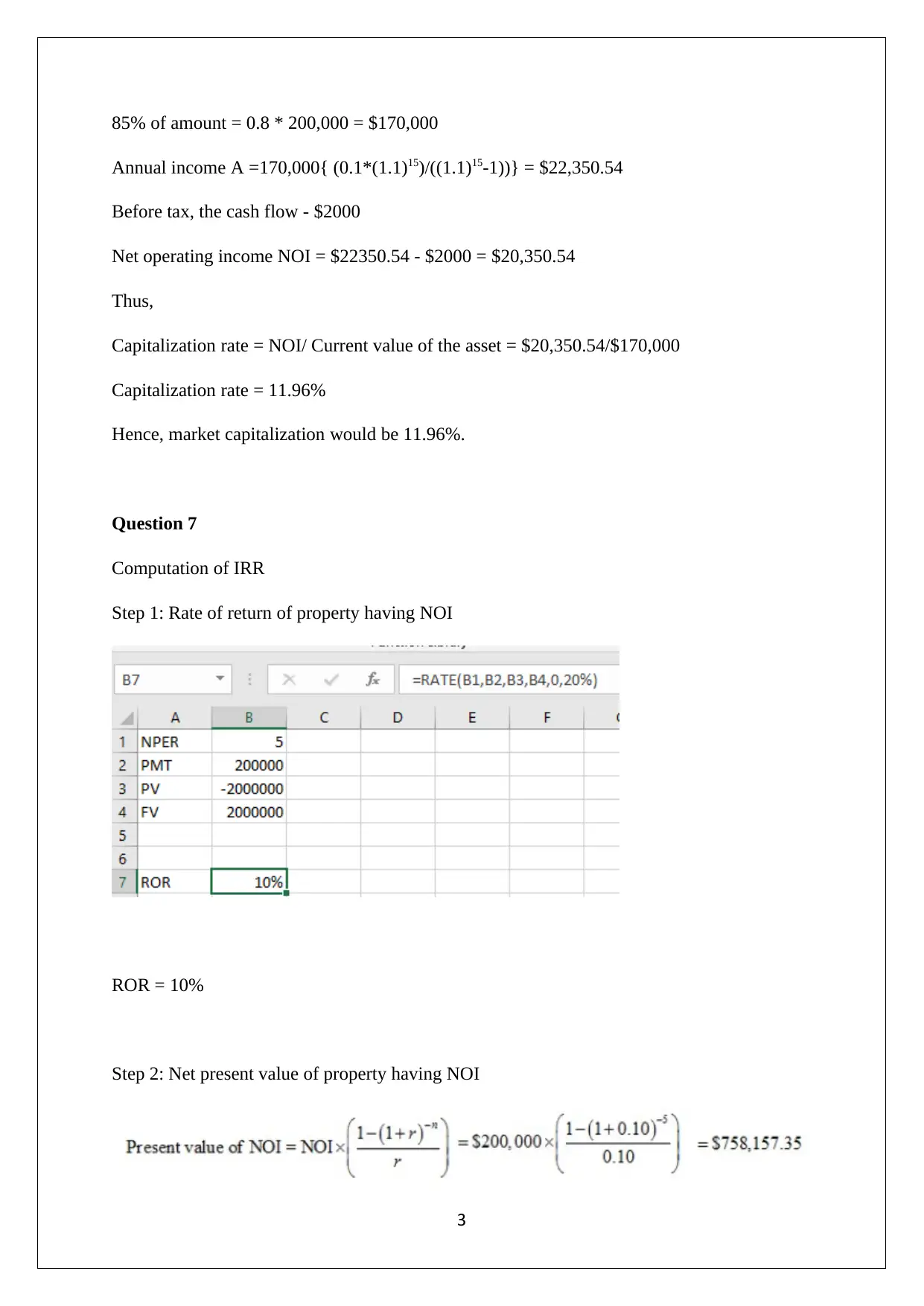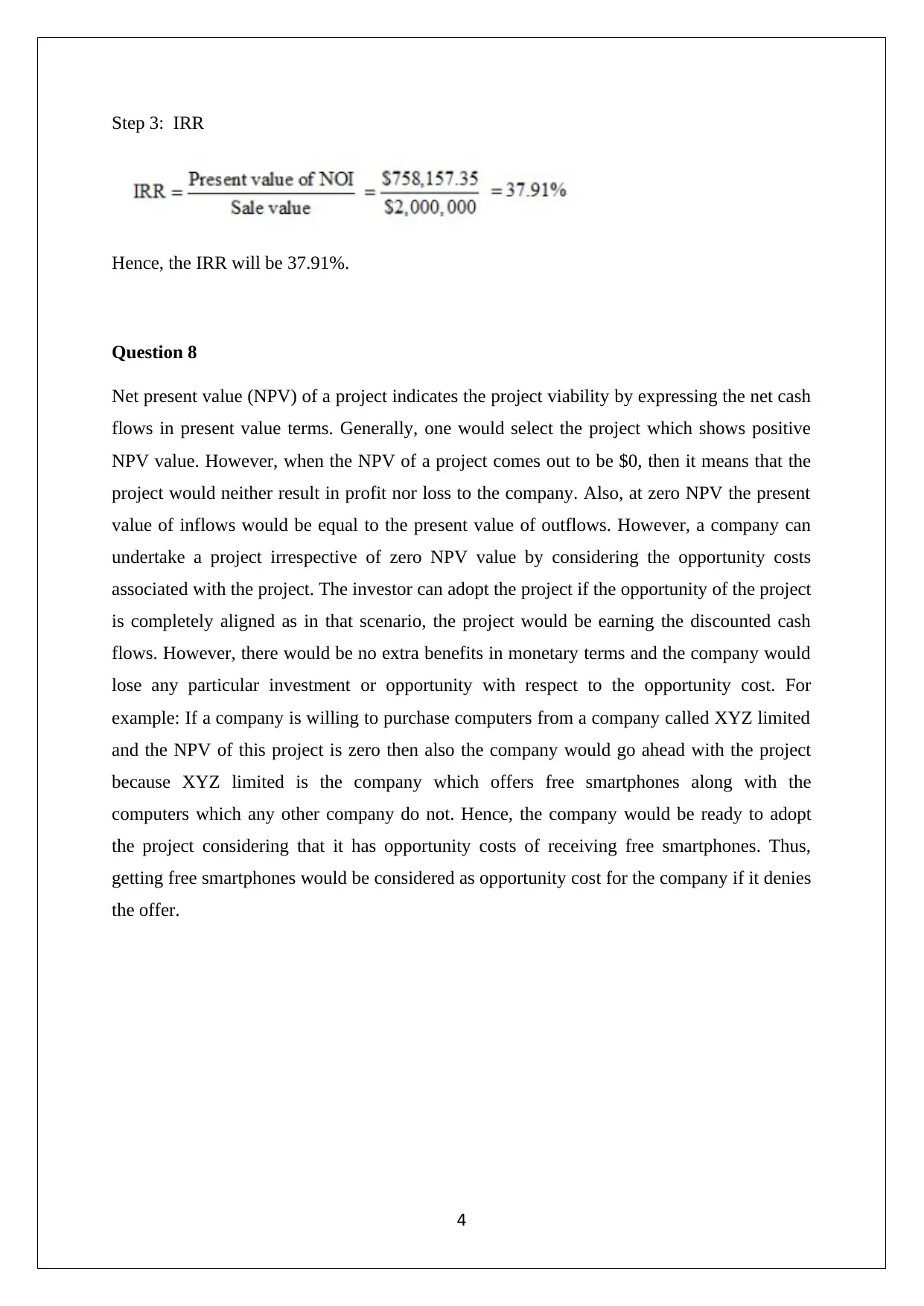REM400 - Real Estate Finance: Final Take-Home Exam Solution
VerifiedAdded on 2023/01/20
|5
|811
|28
Homework Assignment
AI Summary
This document presents a comprehensive solution to a Real Estate Finance take-home exam (REM400) from April 2018. The solution meticulously addresses eight questions covering key concepts in real estate finance. The first question calculates the break-even interest rate, while the second determines the before-tax internal rate of return on equity (BTIRRE). Question three computes taxable income. The fourth question utilizes the Gross Income Multiplier (GIM) approach for property valuation. Question five focuses on size adjustments in property valuation. Question six calculates the market capitalization rate. Question seven computes the Internal Rate of Return (IRR), and the final question discusses the implications of a zero Net Present Value (NPV). The solutions include detailed calculations and explanations, providing valuable insights into various financial aspects of real estate.
1 out of 5






![[object Object]](/_next/static/media/star-bottom.7253800d.svg)